Belén Orihuela Pantoja
Computational Thinking (CT) should be progressively developed from the earliest educational stages, promoting its integration into different curriculum areas. In this context, the present teaching proposal is framed within the third cycle of Primary Education and presents a practical experience that combines the learning of historical content with the development of CT skills, such as sequencing, problem decomposition, debugging, and pattern identification.
Over five sessions, 5th-grade primary students worked through challenges contextualized in different Historical Ages, from Prehistory to the Contemporary Age, using active methodologies like Project-Based Learning and gamification. The activities included both “plugged” activities, involving educational robots, block programming, and digital resources, and “unplugged” activities. The guiding thread was a time travel journey that culminated in the collaborative construction of a timeline, which allowed for ordering and contextualizing the events covered.
The proposal was implemented in five 5th-grade primary groups, with a total of 116 participating students. To evaluate the impact of the intervention, an initial and a final test on historical knowledge were administered. The results show an improvement in the comprehension of historical chronology, the identification of relevant milestones, and the acquisition of basic computational skills. Student feedback was positive, highlighting activities such as building shelters with Lego, using the robot, the Morse code challenge, and the timeline.
The teachers involved also valued the experience as innovative, motivating, and inclusive, emphasizing the participation of the entire group. In terms of viability, the experience is considered replicable with success in other educational centers.
Based on the results obtained, it is concluded that the proposal constitutes a relevant practical experience that effectively integrates historical learning with CT work in Primary Education.
This educational program is derived from the Master’s Final Project (TFM) by Belén Orihuela Pantoja.
The development of Computational Thinking (CT) has gained significant relevance in the educational field. As Wing (2006) points out, CT is considered a higher-order cognitive skill that facilitates problem-solving through abilities such as decomposition, pattern identification, abstraction, algorithmic thinking, debugging, and solution validation. Thanks to these skills, it is possible to automate the solution to a problem by defining ordered steps through an algorithm.
In the current context, Organic Law 3/2020, of December 29, advocates for competency-based learning, where digital competence and CT play a transversal role. Along the same lines, the Código Escuela 4.0 Program, promoted by the Ministry of Education, Vocational Training and Sports, promotes the integration of technologies, educational robotics, and programming as part of the school curriculum, favoring the responsible, creative, and critical use of digital tools.
In parallel, the teaching of History in the third cycle of Primary Education faces significant challenges. Among them, students often struggle to internalize the chronology of historical periods, relate relevant events, contextualize them coherently, or interpret the past critically and reflectively. Frequently, the study of History is perceived as excessively abstract or disconnected from students’ reality, which limits motivation. Therefore, it is necessary to implement active and participatory methodologies that allow for experiencing historical knowledge.
This Educational Programme precisely arises with the intention of responding to this challenge, proposing an approach that combines CT work with the learning of historical content from the 5th grade Primary Education curriculum. The intervention, carried out in two educational centers in the Community of Madrid, is structured around a didactic sequence designed using active methodologies such as Project-Based Learning and Gamification. The proposal integrates “plugged” activities (using educational robots and digital resources) and “unplugged” activities (without electronic devices), all organized around challenges linked to the Ages of History.
Based on this context, the general objective of this Educational Programme is to reinforce historical knowledge while working on CT skills in fifth-grade primary students, through activities contextualized in the five Ages of History that combine “plugged” and “unplugged” proposals.
This programme report is organized into six chapters, along with various annexes that complement the information. The first chapter includes the introduction and the objectives of the project, positioning CT as the backbone of the proposal and its connection with the Social Sciences area.
The second chapter develops the theoretical framework, delving into CT in early stages and the treatment of History in Primary Education, thus establishing the pedagogical and curricular bases of the project.
Next, the third chapter describes in detail the design of the intervention proposal, explaining the selected methodology, the planning of the sessions, the resources used, and the evaluation procedures planned to assess student progress.
The fourth chapter focuses on the practical implementation of the project, describing the educational context, the coordination of participants, and the development of the sessions in the centers.
Chapter five presents the results obtained and their analysis, both quantitative and qualitative, also including observations made during the development, improvement proposals, study limitations, and the final assessment by the participating teachers and students.
Finally, chapter six presents the general conclusions and proposes possible future lines of work derived from the experience.
The programme report is completed with a bibliography section and a series of annexes that include evaluation instruments and the final products created to develop the project, facilitating the understanding and replicability of the proposal.
The current Organic Law 3/2020, of December 29, which modifies Organic Law 2/2006, of May 3, on Education (LOMLOE), establishes a competency-based curriculum approach that transversally integrates the development of digital competence and promotes active methodologies. Digital competence, understood as the safe, critical, and creative use of technologies, must be addressed from different areas of the curriculum and adapted to the needs of students to prepare them for the challenges of today’s society (LOMLOE, 2020).
In this regard, the Código Escuela 4.0 program, promoted by the Ministry of Education, Vocational Training and Sports, aims to incorporate CT, robotics, and programming from the earliest educational stages, through “plugged” and “unplugged” activities (Ministry of Education, Vocational Training and Sports, 2022).
Decree 61/2022, of July 13, of the Governing Council, which establishes the organization and curriculum of the Primary Education stage for the Community of Madrid, specifies the competency-based approach of the LOMLOE and explicitly includes digital competence as one of the backbone axes of learning. Within this framework, the Technology and Robotics area is introduced with the purpose of responding to the demands of a society in constant technological advancement, bringing students closer to fields such as robotics, artificial intelligence, the Internet of Things, and augmented reality. This area is organized into six blocks, the first being that corresponding to CT, whose treatment begins with initiation through “unplugged” activities and block programming adapted to the students’ level.
From its competency-based approach, the curriculum promotes skills such as the interpretation and execution of simple algorithms, the use of control structures (loops, conditionals, operators), guided modeling with drawings, diagrams or manipulable objects, and the extension of programming to creative contexts such as music or drawing. In addition, the decomposition of tasks, pattern identification, and the creation of algorithms are emphasized as key phases of CT, as well as the development of interpersonal skills such as teamwork and an interest in solving problems through programming. These skills are complemented by the transversal development of CT in other areas such as Mathematics, where data organization, modeling, and the automation of daily situations with support from guided patterns and algorithms are worked on (Decree 61/2022, Community of Madrid, 2022).
In recent years, CT has gained prominence in schools. Various studies have demonstrated its applicability in Primary Education, both through “unplugged” activities and through educational robotics. These activities allow students to acquire skills such as decomposition, algorithmic thinking, abstraction, and debugging.
Dağ et al. (2023) conducted a study with third and fourth-grade primary students to measure the impact of an “unplugged” programming course on their CT skills. The results showed an improvement in skills such as decomposition, abstraction, generalization, and evaluation, and these improvements were maintained weeks after the intervention, demonstrating their durability. Furthermore, no gender differences or previous access to technology were found. Along similar lines, Del Olmo-Muñoz et al. (2020) developed a proposal with second-grade primary students based on “unplugged” activities, which showed a significant improvement in CT skills, in addition to high student motivation.
Regarding the combination of “unplugged” activities and educational robotics, Montuori et al. (2023) demonstrated in a study with early childhood education children that this mixed approach produces benefits not only in the development of CT, but also in cognitive skills such as planning, spatial orientation, and attention. Along these lines, Kwon et al. (2022) incorporated bodily learning in first-cycle primary students, through activities in which the body itself represented the movements of a robot. This physical approach proved effective in improving both spatial reasoning and CT skills, with no gender differences among participants.
The comparative effectiveness between “plugged” and “unplugged” activities has also been analyzed. Sigayret et al. (2022) found that both modalities improve CT. The “unplugged” approach stands out for facilitating initial understanding, reducing cognitive load, and generating a more motivating experience. For its part, the “plugged” approach provides immediate feedback. The combination of both forms produces better results than the isolated use of only one, as it allows for reinforcing concepts from different approaches. Fiş Erümit (2024) confirmed in a study with primary students that an eight-week program that integrated “unplugged” activities and block programming in code.org produced improvements in skills such as sequencing, the use of conditionals, abstraction, and algorithm design, which reinforces the effectiveness of a hybrid methodology for the development of CT.
Likewise, studies such as that by Kjällander et al. (2021) show that six and seven-year-old students can begin programming using visual tools such as ScratchJr, developing sequencing, logic, and digital storytelling skills from an early age through playful and multimodal environments. For their part, Tsarava et al. (2022) propose a cognitive definition of CT and demonstrate its connection with skills such as verbal, numerical, and spatial reasoning.
Collaborative environments are consolidating as an effective strategy to foster CT in primary students. Zapata et al. (2021) developed a learning environment based on collaborative games that promoted student motivation and involvement. The study showed that this type of environment facilitates the acquisition of concepts such as sequencing, loops, and decision-making, and also promotes teamwork and joint problem-solving.
In relation to teacher training, Molina-Ayuso et al. (2022) carried out an experience with 149 future primary education teachers in Spain, in which the use of Scratch applied to the teaching of mathematics was introduced. The results showed significant improvements in the understanding of key CT concepts such as loops, conditionals, and debugging, as well as a positive attitude towards the use of programming as a transversal didactic resource. This experience demonstrates that integrating CT into initial teacher training allows not only for acquiring technical knowledge, but also for developing innovative pedagogical competencies applicable in the classroom.
Finally, studies such as that by Zeng et al. (2023) have analyzed how teachers integrate CT in the classroom, focusing on an early childhood education teacher in China. The study indicates that the teacher understood concepts such as sequences, loops, and conditionals well, but had difficulties working with students on problem decomposition or debugging. She lacked specific didactic tools to teach CT effectively. The activities she proposed were mostly group-based and highly directed, with little student participation. However, the study highlights the use of an “unplugged” tool, designed with accessible materials adapted to the stage, which allowed for introducing programming concepts in a playful way. The authors point out the importance of offering teachers more complete training, which not only addresses CT concepts, but also specific methodologies to teach them in the classroom in a flexible, motivating way, adapted to the needs of the students.
Regarding the Social Sciences area within the third cycle of Primary Education, the knowledge of historical time, the use of timelines, the understanding of processes of change and permanence, as well as the ability to interpret past events and relate them to the present, are promoted. Likewise, Decree 61/2022, of July 13, incorporates basic knowledge related to the use of digital tools for searching, processing, and representing information, fostering the integration of digital competence in the analysis of historical content.
The project works on the contents included within Block A, called: Societies and territories: societies through time. This block includes essential skills such as the elaboration of timelines on the ages of Spanish history, as well as the understanding of processes of change and permanence over time. In addition, historically relevant topics are addressed, including the Middle Ages, the Modern Age, and the Contemporary Age. Among the contents, the beginning of the Middle Ages in the Iberian Peninsula with Visigothic Hispania, the presence of Muslims in the peninsula, the evolution of Christian kingdoms and the Reconquista, the reign of the Catholic Monarchs, the discovery of America, as well as aspects of modern Spain in the 18th century with the arrival of the Bourbons, and of the Contemporary Age during the 19th, 20th, and 21st centuries, stand out.
Likewise, the project also incorporates basic knowledge corresponding to the second cycle. In this sense, contents on the Iberian Peninsula in Prehistory, Roman Hispania during the Ancient Age, as well as the fall of the Roman Empire and the influence of the barbarian invasions are included (Decree 61/2022, Community of Madrid, 2022).
This designed educational programme is inserted into this regulatory framework, aimed at 5th-grade primary students and oriented to integrate the learning of History with CT work through active methodologies such as Project-Based Learning and gamification. Throughout the sessions, students work in teams to solve challenges linked to different Historical Ages, using digital devices (tablets, QR codes, and Padlet) and manipulative resources (mats, cards, constructions, choreographies) that allow for alternating “plugged” and “unplugged” proposals. During the development of the project, students document their progress using tablets to access instructions, record videos, take photographs, and upload their progress to a Padlet shared with their team, ensuring at all times the protection of minors’ data and teacher supervision of the published content.
Each of the project activities allows for working on the curricular contents of the Social Sciences area in connection with CT skills. In addition, digital competence is fostered through the use of technology to plan, record, and communicate learning.
In short, this educational programme offers an interdisciplinary proposal that responds to the demands of current educational legislation, combining the study of History with the acquisition of digital and computational competencies through active, collaborative, and motivating methodologies.
This educational program is designed with the hypothesis that integrating Computational Thinking (CT) through active and collaborative methodologies in the History curriculum, along with the use of digital tools, will significantly enhance historical knowledge in 5th-grade primary students while simultaneously developing CT skills.
Our main objective is to strengthen historical knowledge and CT skills in 5th-grade students through engaging activities centered on the Ages of History. These activities blend “plugged” experiences using educational robots with “unplugged” activities that do not require electronic devices. Within this framework, we have set the following specific objectives:
Design activities that develop specific CT skills tailored to the characteristics and challenges of each historical period.
Implement an active methodology that motivates students, meaningfully integrating History learning with digital skills.
Evaluate student progress through assessment and satisfaction with the completed activities.
The intervention involves a didactic sequence based on project-based learning and the use of digital resources (such as Padlet, tablets, and educational robots) to promote student participation. This approach aims for students to acquire historical content more meaningfully while developing various CT skills and strengthening abilities like collaboration, creativity, and critical thinking. Activities are designed to match the cognitive and digital abilities of third-cycle primary students, with varied challenges to maintain motivation and attention.
The project leverages active learning methodologies, particularly Project-Based Learning (PBL) and Gamification. PBL, as defined by Ruiz and Ortega-Sánchez (2022), places students at the center of their learning process. Through collaborative and autonomous work, students engage in various activities aimed at creating a final product.
Throughout the project, students tackle challenges related to different Ages of History, learning to differentiate them and accurately locate relevant events. The work is organized into cooperative groups, where activities are introduced with guidance, but student autonomy is fostered through clear instructions. This approach allows them to progress independently, develop critical thinking, collaborate with peers, and make joint decisions. The project culminates in a final product: a collective timeline that synthesizes the work from previous sessions and reflects acquired knowledge.
Gamification is integrated by incorporating game mechanics to boost motivation and engagement (Zambrano et al., 2020). Each historical era is framed as a “mission” that the group must successfully complete. Additionally, a central narrative—a time-travel journey where teams collaborate to advance—enhances student motivation and strengthens teamwork.
Students will work in cooperative groups of 4-5 members, forming six groups per class. Groups will be balanced to ensure diversity and adapt activities to different learning needs, guaranteeing full participation.
The classroom will be organized to facilitate access to materials and resources, with designated areas for teamwork and the use of robots and mats. Each group will have a tablet to consult instructions, record progress, and document achievements.
The project unfolds over six 50-minute sessions. Each group will work on three of the five Historical Ages. In the first session, all groups will complete an initial test and an introductory activity to establish temporal context and familiarize themselves with robot use. In the second session, half of the groups will focus on Prehistory and the other half on Ancient History. In the third session, some will work on the Middle Ages and others on the Modern Age. The fourth session will be dedicated to the Contemporary Age, explored by all teams. In the fifth session, each group will present their completed missions, sharing their learning. Finally, the sixth session will involve the collaborative construction of the timeline and a final evaluation.
This structure, where each group explores three of the five Historical Ages, accounts for time limitations. Students who do not directly work on certain periods will still learn about them through peer presentations, enabling their participation in the final timeline creation. Moreover, the teacher will provide a summary of activities at the beginning of each session to reinforce concepts.
Here’s a breakdown of each session’s purpose, activities, and competencies developed. Detailed activity descriptions are provided below.
Session 1: Project Presentation and Initial Robot Activity (Collecting Historical Cards)
Purpose: Contextualize the project and begin CT work through robot programming.
Activities: Program a robot to collect historical event cards, essential for the final timeline activity.
Competencies: Logical thinking, abstraction, planning, decomposition, and collaboration.
Sessions 2-4: Historical Missions
Purpose: Deepen knowledge of different historical periods through practical and dynamic challenges.
Activities:
Prehistory (unplugged): Construct prehistoric shelters with Lego.
Ancient Age (plugged): Program trade routes on a maritime mat.
Middle Ages (unplugged): Design heraldic shields.
Modern Age (unplugged): Create choreographies inspired by period dances.
Contemporary Age (unplugged): Decipher and create Morse code messages.
Competencies: Creativity, historical analysis, digital tool use, CT skills (decomposition, patterns, algorithm design, debugging), and teamwork.
Session 5: Mission Presentations
Purpose: Share learned content.
Activities: Oral presentations.
Competencies: Communication.
Session 6: Timeline Construction and Final Evaluation
Purpose: Collectively build the final timeline and assess historical knowledge.
Activities: Construct the timeline, justify historical and chronological decisions, and complete evaluation forms.
Competencies: Logical thinking, solution validation, and critical analysis.
Throughout the sessions, students will document their progress using tablets, consulting instructions, recording videos, and taking photos of their mission processes and results. QR codes will link to infographical explanations, allowing students to upload their progress to a dedicated Padlet for each team, ensuring data privacy by avoiding personal information. This digital space will log their journey from start to finish. Images and videos will not show student faces, and all content will be teacher-reviewed. Access to these Padlets will be restricted via private links.
The first session begins with the project introduction, focusing on exploring historical ages while developing CT skills. Each group will use a MatataStudio Coding Set and a mat representing a timeline with hidden historical event cards. The main mission is to program the robot to collect as many cards as possible, overcoming obstacles. This activity develops algorithmic thinking (programming logical sequences), decomposition (breaking tasks into steps), pattern recognition (identifying optimal strategies), abstraction (focusing on key elements), and debugging (correcting programming errors).
Groups will program the robot to navigate the mat, planning efficient routes to collect cards, which serve as rewards for the final session. Once all possible cards are collected, students will program the robot to reach a specific “Prehistory” or “Ancient Age” square, where a QR code will lead them to an infographic explaining their first mission.
Each group will deeply explore three Historical Ages, completing a specific mission in each, spanning three sessions to optimize classroom time. The assigned periods for each group are:
Group 1, 3, 5: Prehistory, Modern Age, Contemporary Age.
Group 2, 4, 6: Ancient Age, Middle Ages, Contemporary Age.
Here are detailed explanations of the activities for each age:
Prehistory (Unplugged): Students build a prehistoric shelter using Lego pieces, focusing on decomposition, pattern recognition, and creativity. They plan and execute the build in manageable steps, identify geometric patterns for stability, apply logical thinking for piece distribution, and use abstraction to focus on essential design elements. The activity encourages creative exploration of prehistoric life. Students will sketch their designs, then build and photograph their creations for Padlet.
Ancient Age (Plugged): Students program their Matatalab Coding Set robot to navigate trade routes, visiting key cities like Rome, Carthage, and Alexandria, and collecting goods. This activity develops algorithmic thinking (using loops and Boolean conditions), decomposition (breaking down tasks), and pattern recognition (optimizing routes). Students plan the most efficient route on a map, program the robot using MatataCode (a block-based programming software similar to Scratch), and debug errors. They’ll photograph/video their completed routes for Padlet.
Middle Ages (Unplugged): Students design unique heraldic shields using symmetries and geometric patterns. This activity fosters pattern recognition (applying symmetry), abstraction (selecting representative elements), and algorithmic thinking (following a structured process). Decomposition helps divide the shield into sections. Students will plan their shield’s division, symbols, and geometric representations, then create their design on a larger template using markers, colored pencils, and geometric shapes. They’ll photograph their finished shields for Padlet.
Modern Age (Unplugged): Students create a choreography inspired by Modern Age dances (e.g., minuets, Renaissance dances) using basic movement patterns and their creative touch. This activity develops pattern recognition (identifying and repeating sequences), decomposition (breaking down choreography into steps), and algorithmic thinking (organizing movements logically). Abstraction helps focus on essential dance elements, and creativity is fostered through original movement design. Students will use basic movement cards, plan sequences with repetitive patterns and original movements, practice, and then photograph their movement cards for Padlet.
Contemporary Age (Unplugged): Students explore Morse code by deciphering messages and creating their own. This activity develops pattern recognition (identifying dot and dash combinations), abstraction (focusing on essential message elements), data analysis (interpreting and translating codes), and decomposition (breaking messages into individual symbols). Students will use a reference table to decipher historical messages, then create their own brief messages in Morse code, photographing their results for Padlet.
Mission Presentations: In the fifth session, students share their mission results with the class, using Padlet as a project log. This promotes collective learning and strengthens CT skills. Explaining problem-solving strategies develops logical thinking, and selecting key information for sharing exercises abstraction. Each group will present their activities, how they tackled challenges, the skills they developed, and what they learned about the assigned historical periods. If live presentations are not feasible, students will record and edit a video summarizing their work for the teacher.
Timeline Construction: After presentations, students will organize all the historical events they collected throughout the project into a timeline. This activity develops logical thinking (ordering events coherently), pattern recognition (identifying temporal relationships), and decomposition (identifying, classifying, and ordering). Abstraction helps focus on essential data for contextualizing events, while solution validation and debugging are applied to detect and correct errors. Students will analyze card content, use prior knowledge, and debate to determine each event’s historical period, then collaborate to build a chronologically accurate timeline. They will justify their decisions, making adjustments as needed, and then present their timeline to the class or teacher. Finally, each student will complete an individual evaluation form with sections on project experience and historical knowledge acquisition.
To implement this proposal, the following resources are needed (further details and examples can be found in Annex 5):
Padlet: For documentation and shared learning.
Tablets: For programming, documenting, and uploading content to Padlet.
QR Codes: Linking to infographical explanations for autonomous information access.
MatataStudio Coding Set (See Figure 1 below).
MatataCode App: Installed on tablets.
Explanatory Infographics.
Mission Record Sheets.
Historical Event Cards.
Thematic Mats: Six temporal mats and three maritime mats.
Lego Bricks: For building shelters.
Cardboard Shields.
Dance Cards.
Physical Timeline.
Markers, Pencils, and Scissors: For material creation.
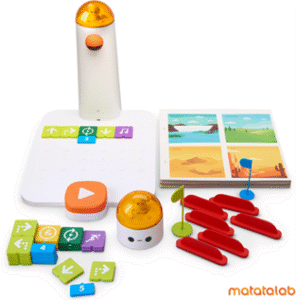
Figure 1. MatataStudio Coding Set.
The project will be evaluated using various instruments, including questionnaires and tests: an initial historical content mini-test, a CT test adapted from Román-González (2015), and a final evaluation form.
Padlet will also serve as a digital repository where groups document audiovisual evidence throughout the project. This, along with the mission presentation day, will be analyzed to observe the integration of historical knowledge and developed skills.
The initial mini-test has eight multiple-choice questions: six on historical ages, characteristics, and events, and two on basic CT concepts (robot programming, error handling).
The CT test, adapted from Román-González (2015), has 28 multiple-choice questions assessing decomposition, abstraction, algorithmic thinking, sequencing, and debugging. It includes self-assessment items on performance and perceived difficulty.
The final evaluation form gathers student opinions on activities, learning, and skills, with a 0-10 interest rating for each activity, open-ended questions on learning and improvements, and a historical evaluation section (multiple-choice and chronological ordering).
The group Padlet functions as a digital repository and qualitative evaluation tool, structured with initial infographics, six individual sections for group mission documentation, and a final timeline construction section. Students upload photos, videos, and descriptions of their work, explaining their process, solutions, skills used, and historical learning. This documentation supports final presentations, fostering reflection, logical thinking, and abstraction.
Data analysis will combine quantitative and qualitative approaches. Quantitative results (mini-test, CT test, final evaluation form) will be comparatively analyzed for improvements and difficulties. Qualitative data from Padlet records and final mission presentations will be examined for audiovisual evidence and interpretation.
To ensure reliability and validity, the same instruments will be used across all groups and centers, and alphanumeric identifiers will be used for students’ tests to maintain confidentiality.
This section details the implementation of the educational program, providing context on the educational environment and the participating schools. It outlines group organization, coordination with involved teachers, and the sequencing of classroom activities. This offers insight into the real-world conditions of the project, allowing for an assessment of its applicability and potential adaptations to other educational settings.
The program was implemented in two public primary schools in the Community of Madrid, specifically in the districts of Vallecas and Vicálvaro. Both schools have 5th-grade classes with students approximately 10-11 years old.
School 2 has four 5th-grade classes (Classes 1, 2, 3, and 4), while School 1 involved a single 5th-grade class. In total, 116 students participated, organized into groups of 4-5 members.
Key aspects of these schools include their commitment to integrating active and digital methodologies in the classroom. They also possess the necessary technological resources (Matatalab robots, tablets, and Padlet) to implement the activities. The intervention aligns with the schools’ Digital Plans and current regulations (LOMLOE and Decree 61/2022 of the Community of Madrid), which promote digital competence and active learning methodologies. Both schools integrate the “Código Escuela 4.0_Madrid” program into their Digital Plans, designed to enhance students’ digital competencies, especially in CT and programming.
The study involved five 5th-grade classes: one at School 1 and four at School 2. The 116 participating students worked in small teams (six groups per class).
Notably, School 1 had previously administered a CT test at the beginning of the school year (Román-González et al., 2017 and 2018), so it was not repeated for this program. However, at School 2, an initial CT test was given to gauge the baseline CT level of participants and ensure similar CT skill levels across the different classes. Additionally, historical knowledge tests were administered at both schools before and after the sessions to compare results and evaluate student progress in History.
The primary participants were 5th-grade students from the two schools. Teachers also collaborated in implementing and supervising activities, ensuring the project’s integration into the school timetable and its suitability for each group. The program consisted of six 40-60 minute sessions at School 2 and five 40-60 minute sessions at School 1.
The project received ethical approval from the Research Ethics Committee of Rey Juan Carlos University (internal registration number 260420243322025), confirming adherence to ethical requirements and justified risks. The committee also deemed the researcher’s capacity and available resources appropriate for the study.
The project was implemented in June 2025 at both schools with 5th-grade students. The program unfolded over several sessions, following a common structure, and was supported by at least one school teacher per classroom. Additionally, there were always at least two individuals in the classroom: the program’s author and a support person to facilitate activities.
On Thursday, June 5, the project began at School 1 with Class 1. Initial tests were administered, the program was presented, and Padlet’s use as an evidence repository was explained. After dividing students into six groups, Activity 1 was carried out, and missions for Prehistory, Ancient Age, and partially, the Contemporary Age began, with the latter completed in a later session. Technical difficulties were encountered when uploading large video files to Padlet; this was resolved by compressing them via WhatsApp through teacher accounts. It was also noted that file upload capability varied by browser.
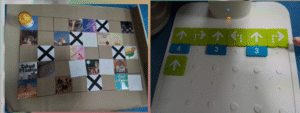
Figure 2. Activity 1: School 1 – Class 1.

Figure 3. Prehistory Mission: School 1 – Class 1.
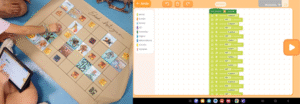
Figure 4. Ancient Age Mission: School 1 – Class 1.
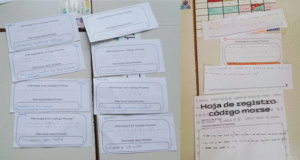
Figure 5. Contemporary Age Mission: School 1 – Class 1.
On Friday, June 6, and Monday, June 9, the initial project activities were implemented at School 2 with Classes 1, 2, 3, and 4. In all cases, initial tests were administered, the project and Padlet use were introduced, students were divided into groups, Activity 1 was performed, and missions corresponding to Prehistory and Ancient Age were carried out. Some groups faced technical difficulties with robot programming, preventing successful completion of the activity. It was also observed that ambient light affected the devices’ sensors, requiring direct light (solved with mobile phone flashlights) for proper functioning.
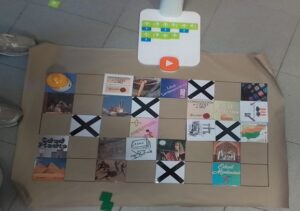
Figure 6. Activity 1: School 2 – Class 1.
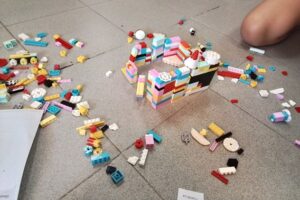
Figure 7. Prehistory Mission: School 2 – Class 3.
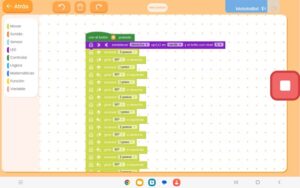
Figure 8. Ancient Age Mission: School 2 – Class 3.
On Tuesday, June 10, activities related to the Middle Ages and the Modern Age were conducted. Dynamics were group-based, and due to the occupation of the 5th B classroom after recess, teams from that group were distributed among other classes.

Figure 9. Middle Ages Mission: School 2.
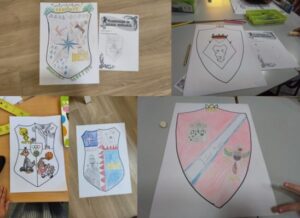
Figure 10. Middle Ages Mission: School 2.
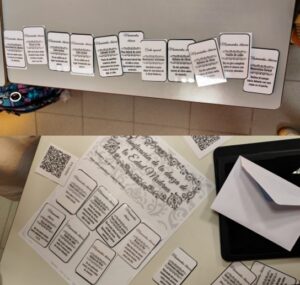
Figure 11. Modern Age Mission: School 2.
On Wednesday, June 11, the activity for the Contemporary Age was carried out. The session began with a collective oral review of historical stages to contextualize the activity. Students deciphered Morse code messages, created their own, and exchanged them with peers. This activity generated high engagement. Some groups, noticing the absence of the letter “ñ” in the Morse alphabet, developed their own symbol for it, demonstrating problem-solving, a key CT skill.
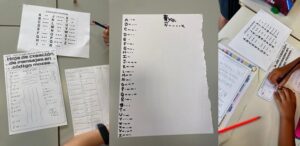
Figure 12. Contemporary Age Mission: School 2.
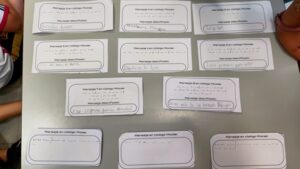
Figure 13. Contemporary Age Mission: School 2 with code resolution.
On Thursday, June 12, the final activity took place at School 2: the timeline construction. Students analyzed, chronologically ordered, and visually represented key milestones from each period, uploading an image or video of the final result to Padlet.
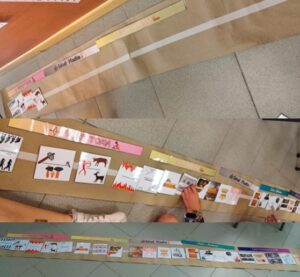
Figure 14. Final Mission: Timeline construction in School 2.
Finally, on Monday, June 16, activities resumed at School 1 with Class 1, completing missions for the Middle Ages, Modern Age, and Contemporary Age, in addition to the final timeline activity and evaluation.
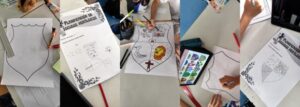
Figure 15. Middle Ages Mission: School 1.
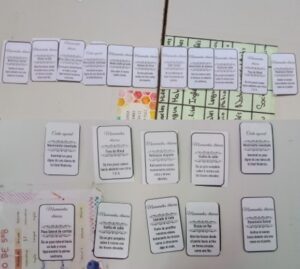
Figure 16. Modern Age Mission: School 1.
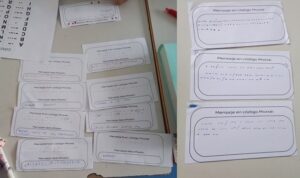
Figure 17. Contemporary Age Mission: School 1.

Figure 18. Final Mission: Timeline construction School 1.
The final mission presentations could not be carried out at either school due to time constraints. However, a brief summary of activities was conducted at the beginning of each session, reinforcing learned concepts. Furthermore, the simultaneous development of activities allowed students to indirectly learn about missions from other periods. By working in parallel, students shared ideas, observed other groups’ progress, and often collaborated with peers from other missions once they finished their own. This dynamic fostered peer learning and broadened their knowledge of different eras beyond what was assigned to their specific group
We collected data to assess both the initial and final levels of historical knowledge and CT skills (planning, abstraction, decomposition, debugging, and pattern recognition). Our three main instruments were a mini-test on historical content, a final evaluation form, and a CT test adapted from Román-González (2015). We also reviewed group Padlets (links in Annex 6) to check how well historical knowledge and practiced skills were integrated.
Our data analysis combines quantitative and qualitative approaches. Quantitative results (CT test, History mini-test, and final evaluation form) were compared between initial and final values to identify potential improvements and areas of difficulty. Qualitative data from Padlet entries were examined, assessing the audiovisual evidence students created throughout the project. It’s worth noting that we couldn’t use final mission presentations due to time constraints. All instruments were applied uniformly across all participating groups and schools.
Based on the collected and analyzed data, it can be concluded that the objectives set in the proposal design were satisfactorily met. Students successfully strengthened their historical knowledge of different Ages and, at the same time, acquired basic Computational Thinking (CT) skills, such as sequencing instructions, problem-solving, and debugging errors. The combination of “plugged” activities, using technological resources and educational robots, and “unplugged” activities allowed for addressing different learning styles and facilitating content comprehension.
Student feedback, gathered from both the final form and qualitative observations, confirms a high degree of satisfaction, motivation, and enjoyment with the proposal. Students particularly highlighted the Lego building activities, robot programming, and Morse code message deciphering. They also positively valued the experience of teamwork and collaboration.
From the teachers’ perspective, the perception was also very positive, valuing the project as motivating and distinct from usual routines. They emphasized student engagement, even from those less participative in other typical classroom dynamics, reinforcing the inclusive potential of the methodology. Furthermore, they highlighted that the level of attention and enthusiasm remained high despite the typical end-of-course fatigue, an aspect that demonstrates the suitability of using active methodologies to foster interest in Social Sciences.
Regarding the self-evaluation of the project, it is considered to have been a viable experience, especially thanks to the support received for managing sessions and organizing dynamics. However, it is recognized that implementation by a single teacher would imply greater logistical complexity and would require detailed planning, well-adjusted timings, and possibly more technological support. Among the strengths, it is worth highlighting the ability to connect curricular content with CT skills in a transversal and motivating way, and the promotion of values like cooperation.
The project has demonstrated that it is possible to integrate the teaching of historical content with CT work in an effective, motivating, and attractive way for 5th-grade primary students. Quantitative results reflect progress compared to prior knowledge, confirming an improvement in the identification and sequencing of historical milestones, as well as in the understanding of chronology. Likewise, the qualitative data collected through forms, observations, and digital productions show a very positive perception of the project, along with a high degree of student involvement, participation, and enjoyment. All of this supports the proposal’s viability, justifying its potential for application in other groups, grades, and educational contexts.
Nevertheless, the detailed analysis reveals some areas for improvement. It would be advisable to continue strengthening the chronological understanding of historical periods and, especially, to deepen the transitions between stages, to ensure that students can logically relate different events within their temporal framework.
Furthermore, it is considered pertinent to explore the expansion of this type of project to higher grades, such as 6th grade of Primary, where new related content could be addressed, for example, Geography, Contemporary History, or Artistic Education, integrating more complex challenges and fostering interdisciplinary learning. Along the same lines, it would be interesting to incorporate technologies such as educational artificial intelligence or augmented reality, in order to better respond to the demands of an increasingly digitalized student body.
In summary, the developed experience constitutes an interdisciplinary proposal aligned with the principles of current educational regulations, integrating historical learning with the development of digital and CT competencies. The combination of active, cooperative, and motivating methodologies has allowed for boosting student participation and commitment, demonstrating the potential of this type of project to enrich teaching and adapt it to the educational needs of the 21st century.
BOE. (2020). Ley Orgánica 3/2020, de 29 de diciembre, por la que se modifica la Ley Orgánica 2/2006, de 3 de mayo, de Educación (LOMLOE). Boletín Oficial del Estado, 340. https://goo.su/XkAxK
BOCM. (2022). Decreto 61/2022, de 13 de julio, del Consejo de Gobierno, por el que se establece para la Comunidad de Madrid la ordenación y el currículo de la etapa de Educación Primaria. Boletín Oficial de la Comunidad de Madrid, 169. https://goo.su/TnZdZQ
CEIPSO José de Echegaray. (2024-2025). Plan Digital de Centro. Curso 2024/25. Recuperado de https://goo.su/m2Sn
CEIP Pedro Duque. (2024-2025). Plan Digital de Centro. Curso 2024/25. Recuperado de https://goo.su/rX5nbp8
Dağ, F., Şumuer, E., & Durdu, L. (2023). The effect of an unplugged coding course on primary school students’ improvement in their computational thinking skills. Journal of Computer Assisted Learning, 39(6), 1902–1918. DOI: https://doi.org/10.1111/jcal.12850
Del Olmo-Muñoz, J., Cózar-Gutiérrez, R., & González-Calero, J. A. (2020). Computational thinking through unplugged activities in early years of Primary Education. Computers & Education, 150, 103832. DOI: https://doi.org/10.1016/j.compedu.2020.103832
Fiş Erümit, S. (2024). Collaboration of Unplugged and Plugged Activities for Primary School Students: Developing Computational Thinking Skills with Programming. International Journal of Computer Science Education in Schools, 6(3). DOI: https://doi.org/10.21585/ijcses.v6i3.173
Kjällander, S., Mannila, L., Åkerfeldt, A., & Heintz, F. (2021). Elementary Students’ First Approach to Computational Thinking and Programming. Education Sciences, 11(2), 80. DOI: https://doi.org/10.3390/educsci11020080
Kwon, K., Jeon, M., Zhou, C., Kim, K., & Brush, T. A. (2022). Embodied learning for computational thinking in early primary education. Journal of Research on Technology in Education, 56(4), 410–430. DOI: https://doi.org/10.1080/15391523.2022.2158146
Ministerio de Educación, Formación Profesional y Deportes. (2022). Plan Escuela Digital 2022-2025 (Escuela 4.0). Gobierno de España. https://goo.su/xAzujcH
Molina-Ayuso, Á., Adamuz-Povedano, N., Bracho-López, R., & Torralbo-Rodríguez, M. (2022). Introduction to Computational Thinking with Scratch for Teacher Training for Spanish Primary School Teachers in Mathematics. Education Sciences, 12(12), 899. DOI: https://doi.org/10.3390/educsci12120899
Montuori, C., Pozzan, G., Padova, C., Ronconi, L., Vardanega, T., & Arfé, B. (2023). Combined Unplugged and Educational Robotics Training to Promote Computational Thinking and Cognitive Abilities in Preschoolers. Education Sciences, 13(9), 858. DOI: https://doi.org/10.3390/educsci13090858
Román-González, M., Pérez-González, J., Moreno-León, J., & Robles, G. (2018). Can computational talent be detected? Predictive validity of the Computational Thinking Test. International Journal of Child-Computer Interaction, 18, pp. 47-58. DOI: https://doi.org/10.1016/j.ijcci.2018.06.004
Román-González, M., Pérez-González, J., & Jiménez-Fernández, C. (2017). Which cognitive abilities underlie computational thinking? Criterion Validity of the Computational Thinking test. Computers in Human Behavior, 72, pp. 678-691. DOI: https://doi.org/10.1016/j.chb.2016.08.047
Román-González, M. (2015). Computational Thinking Test: Design Guidelines and Content Validation. In EDULEARN15 Proceedings, pp. 2436-2444. IATED. DOI: https://doi.org/10.13140/RG.2.1.4203.4329
Ruiz Hidalgo, D., & Ortega-Sánchez, D. (2022). Project Based Learning: A Systematic Literature Review (2015-2022). HUMAN REVIEW. International Humanities Review / Revista Internacional De Humanidades, 14(6), 1–14. Retrieved from https://goo.su/pMBH
Sigayret, K., Tricot, A., & Blanc, N. (2022). Unplugged or plugged-in programming learning: A comparative experimental study. Computers & Education, 184, 104505. DOI: https://doi.org/10.1016/j.compedu.2022.104505
Tsarava, K., Moeller, K., Román-González, M., Golle, J., Leifheit, L., Butz, M. V., & Ninaus, M. (2021). A cognitive definition of computational thinking in primary education. Computers & Education, 179, 104425. DOI: https://doi.org/10.1016/j.compedu.2021.104425
Wing, J. M. (2006). Computational Thinking. Communications of the ACM, 49(3), 33–35. DOI: https://doi.org/10.1145/1118178.1118215
Zambrano, A., Lucas, M., Luque, K., & Lucas, A. (2020). La Gamificación: herramientas innovadoras para promover el aprendizaje autorregulado. Ciencias de la salud, 6(3), 349-369. https://goo.su/w5DN
Zapata-Cáceres, M., Martín-Barroso, E., & Román-Gonzalez, M. (2021). Collaborative Game-Based Environment and Assessment Tool for Learning Computational Thinking in Primary School: A Case study. IEEE Transactions on Learning Technologies, 14(5), 576–589. DOI: https://doi.org/10.1109/tlt.2021.3111108
Zeng, Y., Yang, W., & Bautista, A. (2023). Corrigendum: Teaching programming and computational thinking in early childhood education: a case study of content knowledge and pedagogical knowledge. Frontiers in Psychology, 14. DOI: https://doi.org/10.3389/fpsyg.2023.1342297
